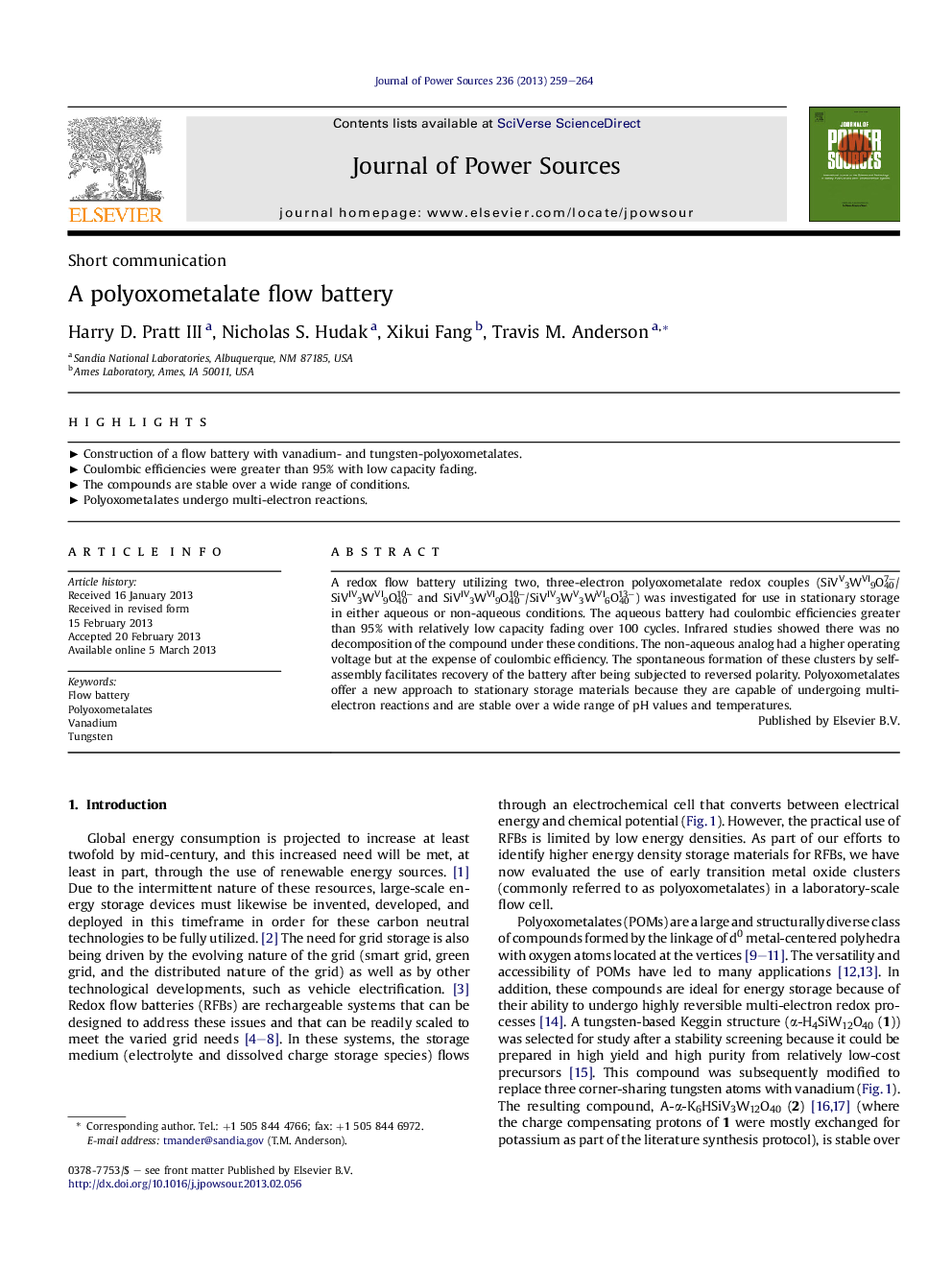| Article ID | Journal | Published Year | Pages | File Type |
|---|---|---|---|---|
| 1287821 | Journal of Power Sources | 2013 | 6 Pages |
A redox flow battery utilizing two, three-electron polyoxometalate redox couples (SiVV3WVI9O407–/SiVIV3WVI9O4010− and SiVIV3WVI9O4010−/SiVIV3WV3WVI6O4013−) was investigated for use in stationary storage in either aqueous or non-aqueous conditions. The aqueous battery had coulombic efficiencies greater than 95% with relatively low capacity fading over 100 cycles. Infrared studies showed there was no decomposition of the compound under these conditions. The non-aqueous analog had a higher operating voltage but at the expense of coulombic efficiency. The spontaneous formation of these clusters by self-assembly facilitates recovery of the battery after being subjected to reversed polarity. Polyoxometalates offer a new approach to stationary storage materials because they are capable of undergoing multi-electron reactions and are stable over a wide range of pH values and temperatures.
► Construction of a flow battery with vanadium- and tungsten-polyoxometalates. ► Coulombic efficiencies were greater than 95% with low capacity fading. ► The compounds are stable over a wide range of conditions. ► Polyoxometalates undergo multi-electron reactions.
